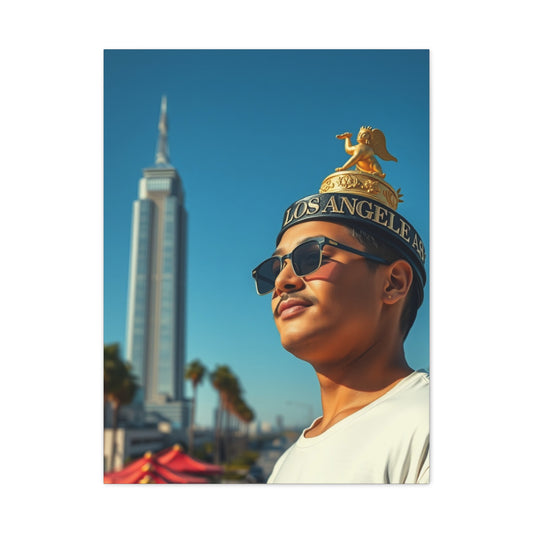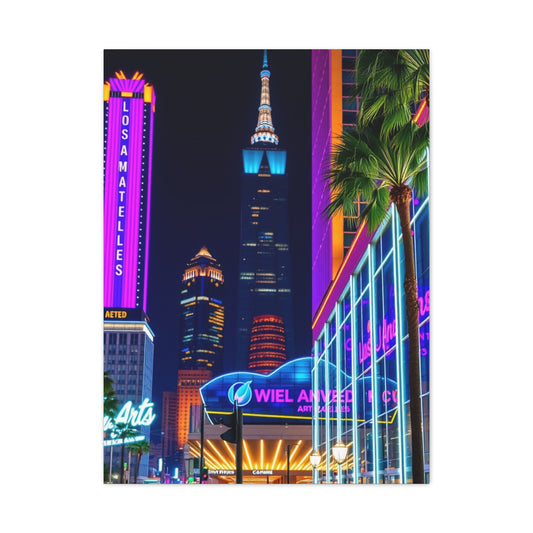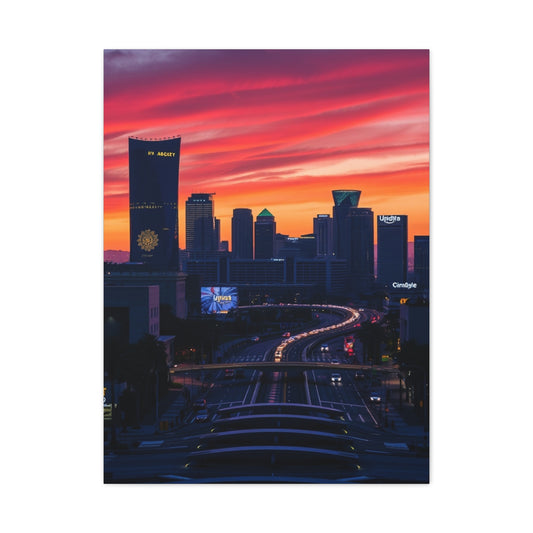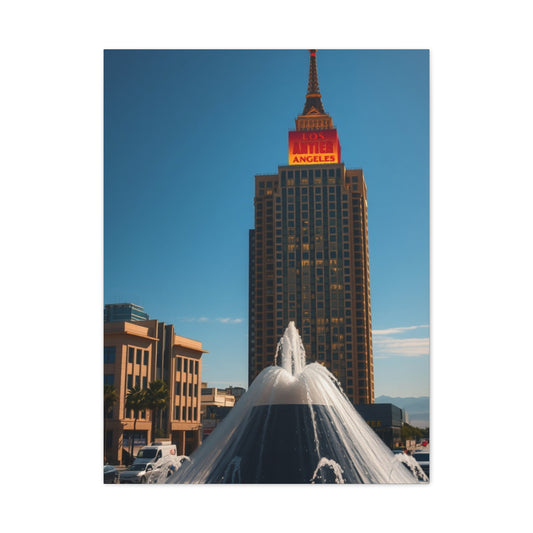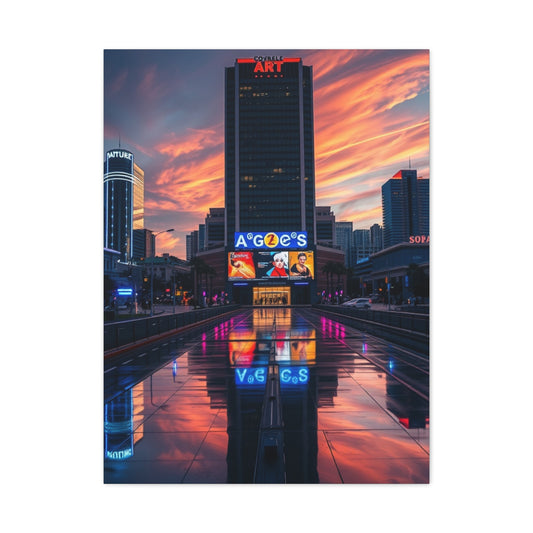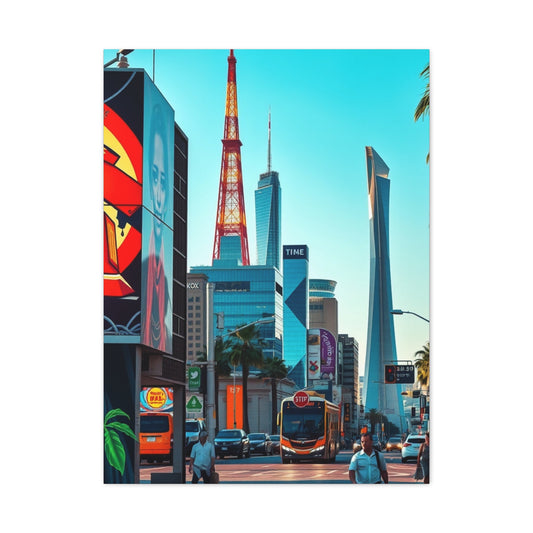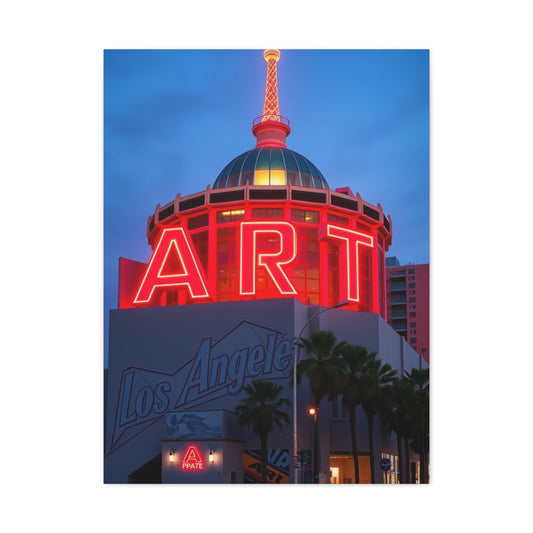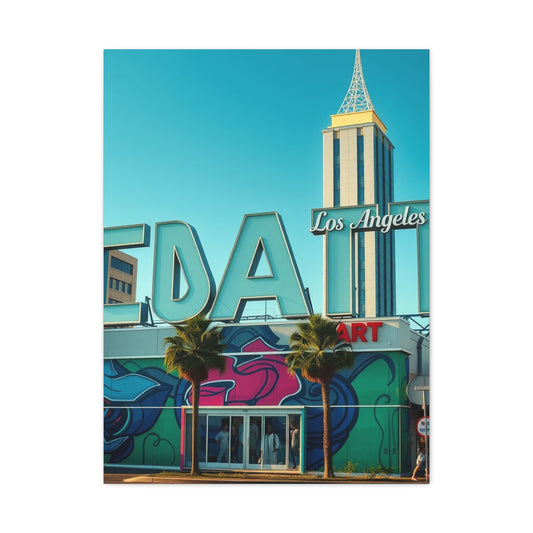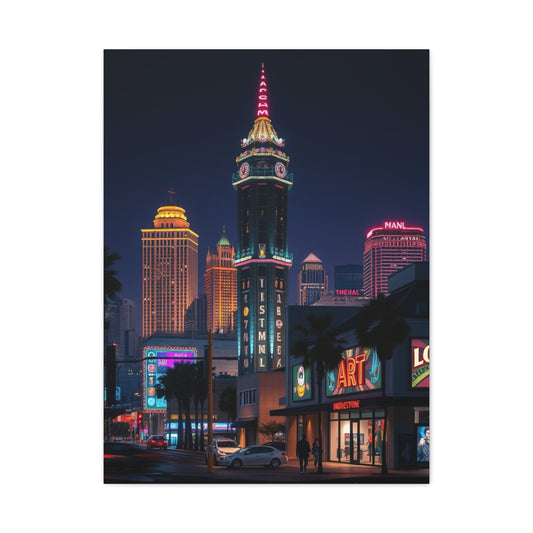Los Angeles Wall Art: Complete Guide to Sunset Views and Street Art
Los Angeles stands as one of the most vibrant artistic cities in the world, where creativity flows through every neighborhood and artistic expression adorns countless walls. The City of Angels offers an incredible array of visual art that captures the essence of California dreaming, from stunning sunset panoramas to gritty urban landscapes that tell the story of this diverse metropolis. Wall art in Los Angeles represents more than mere decoration; it serves as a cultural statement, a reflection of the city's soul, and a testament to the creative spirit that defines Southern California.
The artistic landscape of Los Angeles encompasses everything from professionally curated gallery pieces to spontaneous street expressions that emerge overnight on building facades. This comprehensive exploration delves into the multifaceted world of Los Angeles wall art, examining how artists capture the city's unique character through various mediums, styles, and artistic interpretations. From the golden hour magic that bathes the city in warm light to the neon-soaked nighttime energy that pulses through downtown corridors, Los Angeles provides endless inspiration for artists and art enthusiasts alike.
Understanding Los Angeles wall art requires appreciating the city's complex identity as both a glamorous entertainment capital and a working-class urban center where diverse communities intersect and create something entirely unique. The artistic expressions found throughout Los Angeles neighborhoods reflect this duality, showcasing everything from polished commercial installations to grassroots community murals that celebrate local heritage and contemporary social movements.
Capturing Golden Hour Magic Through Sunset Views in LA Wall Art
The legendary Los Angeles sunset represents one of the most iconic visual elements associated with the city, and artists have long sought to capture this daily spectacle through various artistic mediums. Sunset views in LA wall art transform interior spaces into windows overlooking the Pacific Ocean, where vibrant oranges, deep purples, and brilliant pinks paint the sky in colors that seem almost too vivid to be real. These artistic interpretations go beyond simple photography, incorporating artistic techniques that enhance and amplify the natural beauty of Southern California's evening light.
Artists working with sunset themes often focus on specific vantage points that have become synonymous with the Los Angeles experience. Griffith Observatory provides one of the most popular perspectives, where the entire city sprawls beneath dramatic sky compositions that change throughout the year. From this elevated position, artists capture not just the sunset itself but the way golden light interacts with the urban landscape below, creating layered compositions that speak to both natural beauty and human achievement.
Venice Beach offers another compelling sunset perspective that frequently appears in Los Angeles wall art. Here, the Pacific Ocean stretches endlessly westward while palm trees create distinctive silhouettes against the colorful sky. Artists often incorporate the famous Venice Pier, with its amusement park rides and bustling boardwalk activity, creating dynamic compositions that celebrate both natural beauty and the unique character of this bohemian neighborhood. The contrast between the serene ocean sunset and the energetic beach culture provides rich material for artistic interpretation.
Santa Monica presents yet another sunset perspective that artists love to explore. The Santa Monica Pier, with its iconic Ferris wheel and roller coaster, creates striking silhouettes against the evening sky. Artists often focus on how the amusement park lights begin to twinkle as daylight fades, creating magical moments where natural and artificial light sources blend harmoniously. These compositions frequently emphasize the nostalgic quality of the pier, evoking memories of summer evenings and childhood adventures.
Malibu's dramatic coastline provides artists with opportunities to capture more rugged sunset scenes. Here, rocky cliffs meet crashing waves while the sun disappears beyond the horizon, creating compositions that emphasize the raw power and beauty of the Pacific Coast. Artists working with Malibu sunset themes often incorporate the area's distinctive geological features, including sea caves, rocky outcroppings, and secluded beaches that can only be accessed by winding coastal roads.
The Hollywood Hills offer elevated sunset perspectives that showcase the city's sprawling urban landscape bathed in golden light. From various viewpoints throughout the hills, artists can capture how the setting sun illuminates everything from downtown skyscrapers to suburban neighborhoods, creating vast panoramic compositions that speak to the scale and diversity of Los Angeles. These elevated perspectives often include iconic landmarks like the Hollywood Sign, creating instantly recognizable compositions that celebrate the city's entertainment heritage.
Artistic interpretations of Los Angeles sunsets extend beyond realistic representation to include abstract and impressionistic approaches that capture the emotional impact of these daily spectacles. Some artists focus on color relationships, using bold brushstrokes and vibrant pigments to convey the intensity of Los Angeles light. Others explore the way sunset colors reflect off building surfaces, creating urban landscapes where architecture becomes part of the natural light show.
Minimalist LA Map Prints
Minimalist LA map prints represent a sophisticated approach to celebrating Los Angeles geography while maintaining clean, contemporary aesthetics that work well in modern interior design schemes. These artistic interpretations strip away unnecessary details to focus on essential geographic and cultural landmarks that define the city's character. Rather than overwhelming viewers with comprehensive street networks or detailed topographic information, minimalist map prints highlight key neighborhoods, major arteries, and iconic locations that give Los Angeles its distinctive identity.
The minimalist approach to Los Angeles cartography often emphasizes the city's unique geographic relationship with both mountains and ocean. Artists working in this style frequently use simple line work to show how the Santa Monica Mountains create natural boundaries between different regions of the city, while the Pacific Coast provides the western edge that defines so much of Los Angeles culture and lifestyle. These simplified geographic representations help viewers understand the basic structure that underlies the complex urban sprawl that characterizes modern Los Angeles.
Color palettes in minimalist LA map prints typically reflect the city's natural environment and cultural associations. Soft blues might represent the ocean and clear skies that define the Southern California climate, while warm earth tones could reference the desert landscape that surrounds the metropolitan area. Some artists choose monochromatic approaches that use varying shades of a single color to create subtle depth and visual interest without overwhelming the clean lines and simple forms that define minimalist design.
Typography plays a crucial role in minimalist LA map prints, with artists carefully selecting fonts and text treatments that complement the overall aesthetic while providing necessary geographic information. Neighborhood names, major landmarks, and significant streets might be rendered in clean, modern typefaces that echo the simplicity of the overall design. Some artists experiment with hand-lettered approaches that add personality while maintaining the uncluttered feel that defines minimalist style.
The selection of which elements to include or exclude in minimalist LA map prints requires careful consideration of what truly defines the Los Angeles experience. Artists might choose to highlight major freeways like the 405, 101, and 10, which serve as crucial arteries that connect different parts of the sprawling metropolitan area. Alternatively, they might focus on cultural districts like Hollywood, Beverly Hills, Santa Monica, and Venice, creating compositions that emphasize the city's diverse neighborhood characters rather than transportation infrastructure.
Iconic landmarks frequently appear in minimalist LA map prints, but they're typically represented through simple symbols or text rather than detailed illustrations. The Hollywood Sign might be indicated by a small rectangle and accompanying text, while major beaches could be shown as simplified coastline curves. This approach allows viewers to identify familiar locations while maintaining the clean, uncluttered aesthetic that defines minimalist design philosophy.
Scale and proportion become particularly important considerations in minimalist LA map prints, as artists must decide which areas of the vast metropolitan region to include and how much detail to show at different zoom levels. Some prints focus on central Los Angeles, including downtown, Hollywood, and immediately surrounding neighborhoods. Others take a broader view that includes the entire Los Angeles County area, from the San Fernando Valley in the north to the Palos Verdes Peninsula in the south.
Contemporary minimalist LA map prints often incorporate modern design trends like geometric shapes, asymmetrical layouts, and negative space utilization. These design elements help create visual interest while maintaining the fundamental simplicity that defines the minimalist approach. Some artists experiment with abstract geometric interpretations of Los Angeles geography, using simple shapes to suggest neighborhood boundaries or major geographic features without literal representation.
Natural Beauty Meets Urban Energy in LA Palm Tree Artwork
LA palm tree artwork captures one of the most recognizable symbols of Southern California lifestyle, transforming these iconic plants into artistic statements that evoke everything from tropical paradise to urban sophistication. Palm trees in Los Angeles serve as living landmarks that punctuate street corners, line famous boulevards, and create distinctive silhouettes against the city's dramatic skies. Artists working with palm tree themes explore not just their visual appeal but their cultural significance as symbols of relaxation, prosperity, and the California dream that continues to attract people from around the world.
The variety of palm species found throughout Los Angeles provides artists with diverse visual elements to incorporate into their work. California fan palms, with their large, fan-shaped fronds, create bold, dramatic silhouettes that work well in both realistic and stylized artistic interpretations. Date palms offer different visual characteristics, with their feathery fronds and distinctive trunk textures that add complexity to compositions. Coconut palms, though less common in Los Angeles than in truly tropical climates, appear frequently in artistic interpretations that emphasize the city's aspirational relationship with paradise imagery.
Sunset Boulevard, with its famous palm-lined stretches, provides inspiration for countless artistic interpretations that capture both the trees themselves and their cultural context. Artists often focus on how these palms frame views of the Hollywood Hills or create rhythmic patterns as they recede into the distance along major thoroughfares. The interplay between natural palm forms and urban infrastructure creates dynamic compositions that speak to Los Angeles' unique character as a major city that maintains strong connections to its natural environment.
Beverly Hills palm trees offer artists opportunities to explore themes of luxury and aspiration. The perfectly manicured palms that line residential streets in this exclusive neighborhood become symbols not just of natural beauty but of human control over environment and the prosperity required to maintain such carefully cultivated landscapes. Artists working with Beverly Hills palm imagery often explore the tension between natural forms and human intervention, creating compositions that comment on wealth, status, and environmental manipulation.
Santa Monica's palms provide different artistic opportunities, as these trees exist in closer relationship with the ocean environment that originally supported similar vegetation. Artists often capture how sea breezes affect palm frond movement, creating dynamic compositions that emphasize the living, responsive nature of these plants rather than treating them as static decorative elements. The proximity to the beach also allows artists to explore color relationships between palm greens and ocean blues that create naturally harmonious compositions.
Venice Beach palm trees appear in artistic contexts that emphasize counterculture and bohemian lifestyle associations. Here, artists might focus on how palm trees provide shade for street performers, artists, and the diverse community that gathers along the famous boardwalk. The contrast between the formal, upright growth patterns of palm trees and the informal, creative energy of Venice Beach culture creates interesting compositional opportunities that speak to Los Angeles' embrace of both natural beauty and human creativity.
Artistic techniques for rendering palm trees range from highly realistic botanical illustrations that capture every detail of frond structure and bark texture, to highly stylized interpretations that reduce palm forms to essential geometric shapes. Realistic approaches often emphasize the sculptural qualities of palm trunks, with their distinctive ring patterns and natural curves that create visual interest even without foliage. Stylized approaches might focus on the rhythmic patterns created by multiple palms, using repeated forms to create compositions that emphasize pattern and movement rather than botanical accuracy.
Color treatments in LA palm tree artwork vary widely depending on artistic intent and environmental context. Traditional green palms against blue skies create classic Southern California color combinations that immediately evoke the region's climate and lifestyle. However, many contemporary artists experiment with more unusual color palettes that might emphasize sunset lighting effects, urban atmospheric conditions, or purely abstract color relationships that prioritize emotional impact over realistic representation.
Vintage Charm Meets Modern Appeal in Retro LA Travel Posters
Retro LA travel posters represent a fascinating intersection between vintage graphic design aesthetics and contemporary appreciation for Los Angeles culture, creating artwork that celebrates the city's golden age while appealing to modern design sensibilities. These artistic interpretations draw inspiration from the golden era of travel advertising, when airlines, hotels, and tourism boards commissioned talented artists to create compelling visual invitations that would entice visitors to experience the glamour and excitement of Los Angeles. Contemporary artists working in this style combine period-appropriate design elements with current understanding of what makes Los Angeles unique and appealing.
The visual language of retro travel posters typically emphasizes bold, simplified forms that communicate destination appeal through immediately recognizable imagery. Los Angeles retro travel posters might feature stylized representations of palm trees, beaches, mountains, and iconic architecture rendered in the clean, geometric style that characterized mid-century commercial art. Color palettes often reflect the optimistic, vibrant aesthetic of the 1950s and 1960s, when air travel was becoming accessible to middle-class Americans and California represented the ultimate destination for leisure and lifestyle aspiration.
Typography in retro LA travel posters plays a crucial role in establishing period authenticity while communicating essential information about the destination. Artists often choose fonts that echo the hand-lettered approaches popular during the golden age of travel advertising, when skilled lettering artists created custom type treatments that complemented overall poster compositions. Modern interpretations might use digital versions of classic fonts or create entirely new lettering that captures the spirit of vintage travel graphics while maintaining contemporary readability and appeal.
Iconic Los Angeles landmarks frequently appear in retro travel poster designs, but they're typically interpreted through the stylistic lens of mid-century commercial art rather than realistic representation. The Hollywood Sign might be rendered as a simplified geometric form against a stylized mountain backdrop, while the Santa Monica Pier could be reduced to essential elements that communicate amusement and seaside recreation without unnecessary detail. This approach creates instantly recognizable imagery while maintaining the clean, impactful visual style that made vintage travel posters so effective.
Beach scenes provide popular subject matter for retro LA travel posters, as they immediately communicate the leisurely, recreational aspects of Southern California lifestyle that continue to attract visitors from around the world. Artists working in this style often focus on simplified representations of beach activities, stylized wave patterns, and geometric interpretations of shoreline geography that capture the essence of coastal recreation without overwhelming detail. Color schemes typically emphasize the blues and whites of ocean and sky, often accented with warm colors that suggest sunshine and relaxation.
Downtown Los Angeles provides another rich source of imagery for retro travel poster interpretations. The city's impressive skyline, with its mix of historic and modern architecture, offers opportunities for artists to create compositions that celebrate urban sophistication and metropolitan energy. Retro interpretations might emphasize the geometric patterns created by building facades, the dramatic perspective effects of looking up at tall structures, or the way city lights create patterns against evening skies.
Aviation themes frequently appear in retro LA travel posters, reflecting the historical importance of air travel in making Los Angeles accessible to visitors from distant locations. Artists might incorporate stylized airplane silhouettes, airport imagery, or references to the glamorous era of commercial aviation when flying was considered an exciting adventure rather than routine transportation. These elements help establish the time period that inspires the artwork while celebrating Los Angeles' role as a major destination in the development of commercial aviation.
Architectural Icons Transform Spaces Through Famous LA Landmarks on Canvas
Famous LA landmarks on canvas represent some of the most recognizable and culturally significant artistic subjects available to contemporary artists, transforming iconic architectural and geographic features into powerful visual statements that celebrate the unique character of Los Angeles. These landmark interpretations go beyond simple documentation to explore the cultural, historical, and emotional significance of structures and locations that have become synonymous with the Los Angeles experience. From the Hollywood Sign's promise of entertainment industry dreams to the Walt Disney Concert Hall's celebration of architectural innovation, Los Angeles landmarks provide rich material for artistic exploration.
The Hollywood Sign stands as perhaps the most universally recognized Los Angeles landmark, and artists approach this iconic symbol from numerous perspectives and artistic styles. Realistic interpretations might focus on the sign's relationship to the surrounding Hollywood Hills landscape, exploring how the white letters create dramatic contrast against natural vegetation and geological formations. Abstract approaches could reduce the sign to essential geometric forms, using the letter shapes as compositional elements that create dynamic visual relationships. Some artists explore the cultural significance of the Hollywood Sign, incorporating elements that reference the entertainment industry, celebrity culture, or the dreams and aspirations that the sign represents for people around the world.
Griffith Observatory provides another compelling landmark subject that appears frequently in Los Angeles canvas art. This Art Deco masterpiece offers artists opportunities to explore both architectural details and the observatory's symbolic significance as a place where science, education, and public access intersect. Artists might focus on the building's distinctive dome and geometric facade details, or they could emphasize the observatory's role as a vantage point that offers spectacular views of the entire Los Angeles basin. Night scenes are particularly popular, as they allow artists to explore how the observatory's illuminated architecture contrasts with the dark sky and city lights below.
The Walt Disney Concert Hall represents contemporary Los Angeles architecture at its most innovative and visually striking. Frank Gehry's stainless steel exterior creates complex geometric forms that challenge traditional architectural representation while providing artists with fascinating subject matter that combines sculptural qualities with functional building design. Artists working with Disney Concert Hall imagery often focus on how light interacts with the building's metallic surfaces, creating compositions that emphasize reflection, refraction, and the way architectural forms can appear to change depending on lighting conditions and viewing angles.
Santa Monica Pier offers artists a landmark subject that combines architectural elements with recreational and cultural activities. The pier's iconic amusement rides, including the famous Ferris wheel and roller coaster, create instantly recognizable silhouettes that appear in countless artistic interpretations. Artists might choose to emphasize the nostalgic qualities of traditional amusement park architecture, or they could explore how these vintage recreational structures contrast with the modern beachfront development that surrounds the pier. Evening scenes are particularly popular, as they allow artists to explore the interplay between amusement park lights and natural twilight colors.
The Getty Center provides artists with opportunities to explore contemporary museum architecture while celebrating Los Angeles' commitment to arts and culture. Richard Meier's white travertine buildings create geometric compositions against the natural landscape of the Santa Monica Mountains, offering artists subject matter that combines architectural precision with organic environmental elements. The Getty's terraced gardens and spectacular city views provide additional compositional opportunities that allow artists to explore relationships between built and natural environments.
Venice Beach's distinctive boardwalk architecture, including the famous Muscle Beach outdoor gymnasium and various colorful murals and storefronts, offers artists landmark subjects that celebrate the neighborhood's bohemian culture and creative energy. Artists working with Venice Beach landmarks often emphasize the eclectic, informal quality that distinguishes this area from more polished Los Angeles neighborhoods. The contrast between beachfront recreational activities and urban artistic expression provides rich material for compositions that explore cultural diversity and creative freedom.
Downtown Los Angeles landmarks include both historic and contemporary architectural subjects that reflect the area's ongoing urban revitalization. The Eastern Columbia Building, with its distinctive turquoise terra cotta facade, provides artists with an example of early 20th-century commercial architecture that maintains strong visual appeal in contemporary contexts. Modern additions to the downtown skyline, including various glass office towers and mixed-use developments, offer opportunities for artists to explore how architectural styles reflect changing economic and cultural priorities.
Artistic techniques for representing Los Angeles landmarks range from highly detailed architectural rendering that captures specific design elements and material textures, to impressionistic approaches that emphasize emotional and atmospheric qualities rather than precise documentation. Some artists choose photorealistic styles that celebrate the technical achievement represented by landmark architecture, while others prefer loose, expressive techniques that focus on the cultural significance and emotional impact of these iconic structures.
Community Expression Flourishes in Colorful LA Murals for Home
Colorful LA murals for home represent a democratization of the large-scale public art form that has long been a defining characteristic of Los Angeles neighborhoods, bringing the energy, creativity, and cultural richness of street art into residential and commercial interior spaces. These artistic interpretations capture the spirit of community expression that drives Los Angeles mural culture while adapting the scale, subject matter, and execution methods to work effectively in domestic environments. Home mural art allows residents to celebrate their connection to Los Angeles culture while personalizing their living spaces with artwork that reflects the city's commitment to public creative expression.
The tradition of muralism in Los Angeles extends back decades, with roots in both Mexican muralist movements and the community art initiatives that emerged during the civil rights era. Contemporary home murals often reference this rich history while addressing current themes and using modern artistic techniques that work well in residential contexts. Artists creating home murals might draw inspiration from famous Los Angeles public murals while adapting compositions, color schemes, and subject matter to work effectively in smaller, more intimate spaces.
Neighborhood identity plays a crucial role in many Los Angeles home murals, with residents choosing artwork that celebrates the specific character and culture of their local communities. East Los Angeles murals might emphasize Chicano culture, featuring imagery that references Mexican heritage, family traditions, and community solidarity. Venice Beach home murals could focus on the area's artistic and bohemian culture, incorporating elements that reference street art, surfing, and the eclectic creative community that defines this oceanfront neighborhood.
Color palettes in LA home murals typically embrace the vibrant, optimistic aesthetic that characterizes much of Los Angeles public art. Bright blues might reference the Pacific Ocean and clear Southern California skies, while warm oranges and yellows could evoke sunshine and the golden light that defines so much of the Los Angeles visual experience. Purple and magenta tones might reference the dramatic colors that appear in Los Angeles sunsets, while earth tones could connect to the desert landscape that surrounds the metropolitan area.
Subject matter for Los Angeles home murals varies widely depending on personal interests, cultural background, and specific neighborhood context. Some residents choose murals that feature iconic Los Angeles landmarks, creating interior focal points that celebrate their connection to the city's famous attractions and cultural institutions. Others prefer more abstract approaches that capture the energy and mood of Los Angeles life without specific representational elements.
Cultural celebration forms a major theme in many Los Angeles home murals, with artists and residents working together to create artwork that honors the diverse communities that make up the metropolitan area. These might include murals that celebrate Latino culture, featuring traditional Mexican imagery, Day of the Dead themes, or references to indigenous pre-Columbian art forms. African American cultural themes might include references to jazz music, civil rights history, or contemporary urban art movements that have their roots in Los Angeles communities.
Contemporary social themes frequently appear in Los Angeles home murals, reflecting the city's role as a center for progressive political and social movements. Environmental themes might include references to sustainability, climate change awareness, or the natural beauty that residents work to preserve in an increasingly developed urban environment. Social justice themes could incorporate imagery related to immigration rights, economic equality, or community empowerment initiatives that address urban challenges.
Technical approaches to creating home murals in Los Angeles range from traditional painted techniques that use brushes and rollers to apply acrylic or latex paints directly to wall surfaces, to more contemporary approaches that might incorporate stencils, digital projections, or mixed media elements. Some artists work with removable materials that allow homeowners to change or update their murals without permanent alteration to wall surfaces, while others create permanent installations that become integral parts of architectural spaces.
Scale considerations are particularly important when adapting mural concepts from public spaces to residential environments. Public murals might cover entire building facades, but home murals must work effectively on single walls or even smaller sections of interior spaces. This requires careful attention to composition, ensuring that imagery remains impactful and visually coherent when scaled down from the monumental proportions typical of street art.
Lighting plays a crucial role in how home murals appear and function within residential spaces. Artists must consider how natural light from windows and artificial lighting from lamps and fixtures will interact with mural colors and compositions throughout different times of day. Some artists incorporate lighting design into their mural projects, using strategic placement of fixtures to enhance specific elements or create dramatic effects that change as day transitions to evening.
Metropolitan Energy Captured in Urban Vibes and LA Street Scenes
Urban vibes and LA street scenes represent one of the most dynamic and constantly evolving aspects of Los Angeles visual culture, capturing the energy, diversity, and complexity of daily life in one of America's largest and most culturally influential cities. Artists working with street scene themes explore everything from the bustling commercial districts of downtown Los Angeles to the laid-back residential neighborhoods that stretch across the vast metropolitan area. These artistic interpretations go beyond simple documentation to capture the emotional and cultural essence of urban life in a city where car culture, entertainment industry influence, and incredible cultural diversity create unique streetscape experiences.
Downtown Los Angeles provides particularly rich material for artists interested in capturing urban energy and metropolitan sophistication. The area's dramatic architecture, from historic Art Deco buildings to contemporary glass towers, creates striking visual contrasts that appear in countless artistic interpretations. Artists often focus on the interplay between old and new architectural styles, exploring how historic structures coexist with modern development in ways that reflect the city's ongoing evolution and growth.
The financial district's towering skyscrapers create geometric compositions that emphasize vertical lines and the dramatic perspective effects that result from looking up at tall buildings from street level. Artists working with downtown themes often explore how these architectural forms interact with natural light, creating complex patterns of shadow and illumination that change throughout the day. Evening scenes are particularly popular, as they allow artists to explore how artificial lighting transforms familiar daytime streetscapes into dramatically different nighttime environments.
Hollywood Boulevard offers street scene subject matter that combines entertainment industry glamour with the grittier realities of urban commercial life. The famous Walk of Fame, with its star-embedded sidewalks and costumed street performers, provides colorful human interest elements that appear in numerous artistic interpretations. Artists might focus on the contrast between the polished entertainment venues and the more authentic urban life that continues around them, creating compositions that explore the tension between manufactured glamour and genuine street culture.
Melrose Avenue provides artists with street scenes that emphasize fashion, youth culture, and the creative energy that drives much of Los Angeles' reputation as a trendsetting city. The avenue's eclectic mix of vintage clothing stores, contemporary boutiques, and artistic venues creates visually rich environments where fashion-conscious pedestrians, street art, and commercial signage combine to create distinctly Los Angeles streetscape experiences.
Venice Beach boardwalk represents perhaps the most internationally recognized Los Angeles street scene, where beach culture, artistic expression, and urban energy converge in ways that exist nowhere else in the world. Artists working with Venice Beach themes often focus on the incredible diversity of human activity that takes place along the oceanfront promenade, from street performers and artists to fitness enthusiasts and tourists from around the globe. The contrast between the laid-back beach atmosphere and the intensity of urban creative expression creates compelling compositional opportunities.
Sunset Strip provides street scene material that emphasizes nightlife, music culture, and the historical significance of this famous entertainment corridor. Artists might focus on the neon signage that illuminates the strip after dark, creating compositions that explore how artificial lighting transforms the urban environment. The area's association with rock music history and celebrity culture provides additional thematic material that artists can incorporate into street scene compositions.
Beverly Hills streets offer different kinds of urban imagery that emphasize luxury, precision, and the aspirational lifestyle that attracts people to Los Angeles from around the world. The carefully maintained streetscapes, with their manicured landscaping and high-end retail establishments, provide artists with subject matter that explores themes of wealth, status, and the intersection between natural beauty and human control over environment.
East Los Angeles neighborhoods provide street scene material that celebrates Latino culture and community life in ways that reflect authentic residential experiences rather than tourist attractions. Artists working with East LA themes often focus on family-owned businesses, community gathering places, and the murals and artistic expressions that local residents create to celebrate their cultural heritage and community identity.
Artistic techniques for capturing Los Angeles street scenes range from realistic documentation that accurately represents specific locations and architectural details, to impressionistic approaches that prioritize mood and atmosphere over precise representation. Some artists choose photojournalistic styles that capture candid moments of urban life, while others prefer more stylized approaches that emphasize particular aspects of street culture or architectural character.
Human figures play crucial roles in most Los Angeles street scene art, as they provide scale reference and help communicate the energy and activity that define urban environments. Artists might focus on individual pedestrians who represent different aspects of Los Angeles culture, or they could emphasize crowd scenes that capture the diversity and density of metropolitan life. The clothing, postures, and activities of human figures help establish time periods and cultural contexts that give street scenes their authentic character.
Coastal Culture in LA Beach and Pier Art
LA beach and pier art captures the unique intersection of natural oceanic beauty and human recreational culture that defines much of Los Angeles' identity as a coastal metropolis. The city's extensive Pacific coastline, stretching from Malibu in the north to the Palos Verdes Peninsula in the south, provides artists with diverse coastal environments that range from dramatic rocky cliffs to expansive sandy beaches populated with surfers, sunbathers, and recreational activities that have become synonymous with the Southern California lifestyle.
Santa Monica Beach represents perhaps the most iconic Los Angeles beach destination, and artists frequently focus on this location's combination of natural beauty and recreational infrastructure. The wide, sandy shoreline provides space for countless activities, from volleyball games and fitness training to simple relaxation and people-watching. Artists working with Santa Monica Beach themes often capture the energy and diversity of beach culture, showing how people from different backgrounds and age groups share this public coastal space.
Conclusion:
Los Angeles wall art is more than an aesthetic choice—it is a celebration of a city that pulses with energy, diversity, and limitless imagination. Whether through sweeping sunset vistas that drench the sky in warm, radiant hues or through the layered, expressive textures of its legendary street art, LA offers an artistic vocabulary as varied and vibrant as the communities that call it home. To embrace LA wall art is to embrace a piece of a cultural mosaic that continues to evolve and inspire, one mural, one skyline, and one splash of color at a time.
As this guide has shown, the visual identity of Los Angeles cannot be captured through a single medium or perspective. It is found in the sun dipping behind the Pacific in Malibu, in the silhouettes of skaters along Venice Beach, and in the golden light illuminating Griffith Park. It is also found in alleyways adorned with graffiti tags, warehouse walls transformed into political murals, and entire neighborhoods using art to express identity and resilience. Each piece of wall art carries the emotional weight of the city’s layered history and the optimism of its future.
One of the most compelling aspects of LA wall art is its adaptability to personal spaces. Sunset-themed artwork brings the calm, meditative energy of nature into your home, creating peaceful focal points perfect for living rooms, bedrooms, or meditation areas. The warm tones and expansive horizons invite introspection and tranquility while adding color and vibrancy to your décor. On the other hand, bold street art reproductions and pop-inspired works inject personality, movement, and urban edge—ideal for creative spaces, home offices, or lofts that embrace contemporary aesthetics.
Moreover, Los Angeles wall art enables collectors and decorators to express values beyond design. A mural reproduction from Boyle Heights might speak to activism and community pride, while a black-and-white photo of DTLA architecture captures ambition and reinvention. Each piece becomes a storytelling element—one that communicates the culture, emotion, and humanity of LA’s ever-evolving neighborhoods.
Artists working in the Los Angeles aesthetic also reflect the city’s reputation as a place of reinvention and freedom. They are unafraid to blend classical techniques with digital media, mix natural beauty with gritty urban scenes, or juxtapose high fashion with street realism. This fearless creativity mirrors the city itself: a place where innovation and tradition coexist, and where everyone—from established artists to emerging voices—has the opportunity to leave a mark.
Ultimately, bringing Los Angeles wall art into your home is more than just enhancing your décor—it’s about inviting the soul of a city into your everyday life. It’s about capturing light, movement, rebellion, peace, and possibility all at once. Whether you’re drawn to the serenity of the Pacific Coast at sunset or the vibrant energy of Melrose Avenue’s street art corridor, LA offers a visual experience that transforms walls into meaningful expressions of identity, memory, and style.

